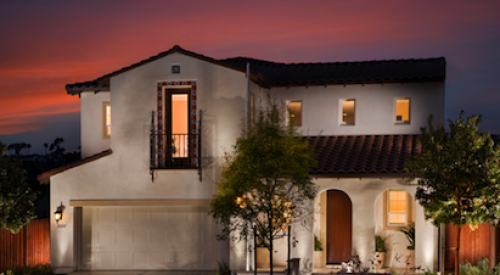Make hay when the sun is shining. That’s how builders are responding to strong demand and low mortgage rates. The question is how best to do it.
1. Raise prices (carefully). Many builders who sell entry-level and midlevel product have slowly bumped up prices in response to demand. But perhaps recalling how price increases of the late 1980s came back to haunt the industry in the early ’90s by exacerbating a recession, no one is going wild.
Steve Wilcox, president of Parkwood Homes in Gaithersburg, Md., says he has increased some price points but only as means of slowing sales to match his buyers’ expectations for timely delivery. Even then, the increases are not direct. Instead, Wilcox says, Parkwood might add granite countertops as part of its base package and mark them up 100%. “It is a balancing act,” says Wilcox.
2. Turn inventories faster. Some builders hesitate to raise prices because it has never been a part of their strategy and would disrupt their operations to do so now. Instead, the focus is on lower cycle times and overall efficiency. Such is the case at Calabasas, Calif.-based Ryland Homes, whose prices are up only 3.5% over the past five years.
“We have a basic strategy to have the fastest inventory turnover in the industry,” Ryland CEO Chad Dreier says. “If you stay consistent on this in good times and bad, it helps the employees and ultimately helps the numbers.”
That consistency leads to better pricing from trades and suppliers, says Dreier. “Once you have the land and have built the models, you have to sell them as fast as you can.”
3. Diversify your business. Crosswinds Communities CEO Bernie Glieberman says his firm is seizing the moment to diversify the markets it serves. The company is buying land in Arizona, Florida and Northern California, away from its base in Novi, Mich.
Glieberman has held off on raising prices for fear of “walking out of” Crosswinds’ core buyer segments when interest rates rise again. “If you raise your price, you are liable to get beyond what your buyer can afford.”
4. Sell more upgrades. In most cases, the easiest way for home builders to increase the price of their homes is to sell more upgrades.
“We can work with our salespeople to maximize options and upgrades,” Dreier says. “I think it’s no secret that builders have better margins on their options and upgrades.”
5. Hone your operation. Many builders are thinking ahead to less robust times. They want to operate at a sustainable pace now and when mortgage rates rise again.
Perry Bigelow of Palatine, Ill.-based Bigelow Homes says his firm is using this “very good market” to “create enough of a backlog to run a good even-flow system” of construction scheduling.
“Our even-flow system has cut our financing requirements,” Bigelow says. “We are almost operating without construction loans right now. We also save a lot of time processing those construction loans, and the team can focus on our schedule and making homeowners happy.”
That sentiment is echoed by Mike Levy, CEO of Bellevue, Wash.-based Lozier Homes, which builds midmarket homes in the Seattle area. With the impact of Sept. 11 on jobs at Boeing, Lozier budgeted for a slower year than it is having. “What we have done in our company is tried to maintain steady production rates,” says Levy.
6. Focus on permits and approvals. Builders are devoting more time to acquiring land and securing entitlements. The lack of lots is the biggest reason builders cite for not having an even better year.
Levy says Lozier Homes is building in only four projects this year instead of the usual six. “We just can’t find as many projects that meet our criteria.”
Jim Harmon, president of Amber Homes in Aurora, Colo., agrees. “The main reason we are off is because we have had difficulty obtaining final entitlements,” he says. “We would have been right at our numbers if we had been able to get government approvals in a timely manner.”
In Portland, Ore., where an urban growth boundary has been in effect for more than 20 years, land supply is critical. Dennis Sackhoff and his team at the area’s largest builder, Arbor Custom Homes in Beaverton, has been working successfully with local authorities to carve out smaller and smaller lots requiring new designs for single-family detached product and an increasing amount of attached homes.
But maybe tight land controls are a blessing in disguise. “We can’t overbuild,” Sackhoff says. “Typically builders would overbuild.”












